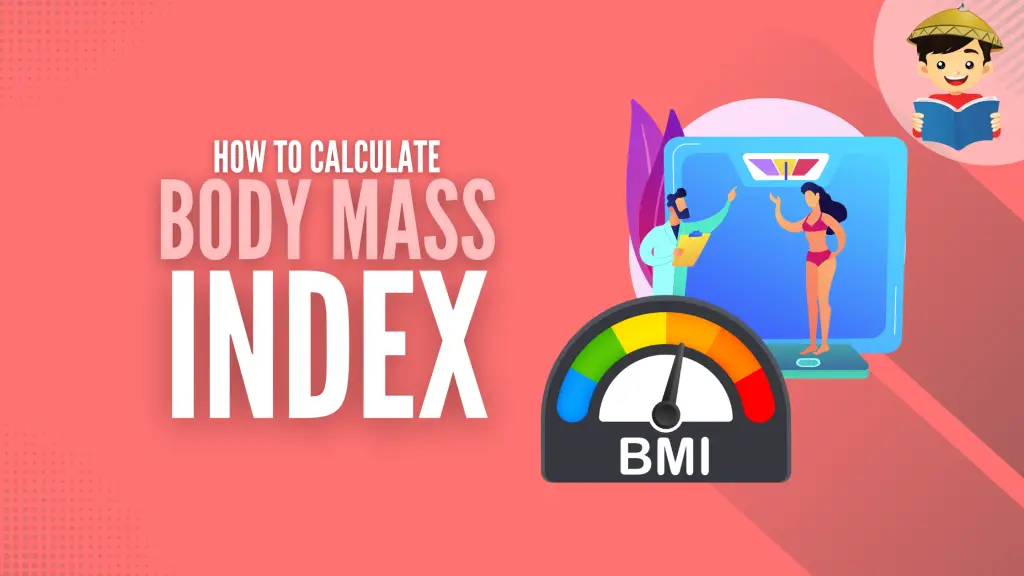Free BMI Calculator Philippines (Plus, Guide to Body Mass Index)

In the fitness world, there are so many different terminologies and abbreviations that it is challenging to keep track of all of them. One of these frequently used abbreviations is BMI (Body Mass Index), which is a measurement of your weight in relation to your height.
But what exactly is BMI, and how is it computed? This simplified guide provides everything you need to obtain and understand your BMI score.
Table of Contents
At a Glance: Free Body Mass Index (BMI) Calculator
BMI Calculator

Select System
Note: Enter meters (m) and kilograms (kg).
Height (m):
Weight (kg):
If you’re in a hurry, you don’t have to read the article below to know your Body Mass Index (BMI).
Use our free calculator above to obtain your BMI in no time.
To use the calculator, select your preferred measurement system (i.e., metric or US imperial) first, then enter your height and weight in the appropriate fields. The height should be in meters if you’ve opted for the metric system and inches if you’ve selected the US imperial system. Meanwhile, the weight should be in kilograms if you prefer metric and pounds if you’ve chosen US imperial.
Click Calculate and let it automatically compute your BMI using the data provided.
Please read the main article below to learn more about Body Mass Index (BMI) and determine your BMI score.
What Is Body Mass Index (BMI)?

Body Mass Index (BMI) is a measurement used to assess your body composition and gives you an idea of whether or not you are at an ideal weight. It is a fat mass ratio compared with the height of normal, healthy adults.
BMI measurements are also used to determine if someone is underweight or obese and how much of their weight is fat mass instead of lean mass (muscle, bone, organs).
Why Is It Important To Know My BMI?
A BMI measurement can estimate a person’s risk of developing certain health conditions, such as heart disease. Knowing your BMI can assess your status as underweight, normal, overweight, or obese. You can also use it to check whether your weight is healthy in relation to your height.
Generally, the higher a person’s BMI, the greater their risk of losing years of healthy life and developing health problems 1 such as
- Heart disease and stroke – high blood pressure, heart attack, congestive heart failure, abnormal heart rhythms (arrhythmias), heart valve disease (endocardiosis), coronary artery disease, atherosclerosis (hardening of the arteries), and thrombosis (blood clots).
- Type 2 Diabetes – high levels of sugar in the blood.
- Certain types of cancer – endometrial cancer (cancer of the lining of the uterus) and breast cancer in women; colon cancer and rectal cancer in men and women; prostate cancer in men; liver cancer; gallbladder disease; kidney cancer.
- Metabolic syndrome – increased blood pressure (hypertension); high levels of insulin or glucose in the blood; excess body fat around your waistline.
On the other hand, being underweight may mean you are not getting enough nutrients. It can lower your resistance to illness because your immune system needs energy from food to function.
If you are underweight, you may get sick more often, taking longer to recover from illnesses and infections. Meanwhile, mental slowness is another common symptom that can occur when the brain gets too little nutrition. This happens when it cannot receive enough oxygen due to low blood pressure caused by malnutrition.
BMI is a convenient way to tell if you are at a healthy weight. It is crucial if you are at high risk for developing chronic diseases like heart disease, diabetes, and some cancers. If you are overweight or obese, losing even a little weight can help reduce your risk.
However, BMI is not intended as a definitive diagnostic tool. It is a generalized measure of the relationship between height and weight, and it does not consider other factors that may indicate an increased risk for some diseases, such as body fat percentages or waist circumference.
As a result, many doctors use BMI measurements in conjunction with other tests to obtain a more comprehensive picture of their patient’s health status.
How To Calculate BMI
1. Metric System
To get your metric BMI, divide your weight in kilograms by your height in meters squared (kg/m²).
BMI = weight (kg) / [height (m)]²
Sample Computation: Say you are 1.75 m tall and weigh 85 kg. Using the formula above, you can determine your BMI:
85 ÷ (3.0625) = 28
The result is 28, which would be categorized as an overweight BMI.
2. Imperial System
Meanwhile, if you are more familiar with the imperial system of measurements, you can obtain your BMI by multiplying your weight in pounds by 703 and dividing the product by your height in inches squared (lbs/m2).
BMI = 703 x weight (lbs) / [height (in)]²
What Does Your BMI Score Mean?
The BMI criteria for Asian populations differ from the standard BMI used in other countries. This is due to differences in body composition between Asian and European descent people.
Asians are known to have more fat than Europeans, even if they are at a healthy weight. So, what is considered a healthy BMI for Asians?
The table below presents different classifications of BMI, both WHO and Asia-Pacific criteria2. Of course, if you are a Filipino, you should refer to the Asian classifications.
| Nutritional Status | BMI cut-off (WHO criteria) | BMI cut-off (Asian criteria) |
| Underweight | <18.5 | <18.5 |
| Normal | 18.5 – 24.9 | 18.5 – 22.9 |
| Overweight | 25 – 29.9 | 23 – 24.9 |
| Pre-Obese | – | 25 – 29.9 |
| Obese | ≥30 | ≥30 |
| Obese Type 1 (obese) | 30 – 40 | 30 – 40 |
| Obese Type 2 (morbid obese) | 40.1 – 50 | 40.1 – 50 |
| Obese Type 3 (super obese) | >50 | >50 |
The WHO classification is based on data from large studies of Chinese, Japanese, Vietnamese, and Indonesian people. The average BMI of people from these countries is relatively lower than the same classification in Caucasian populations. The WHO uses the average BMI of people from these countries who have a healthy BMI (as defined by the “normal” range) as the cut-off for the normal range in Asian populations. If you are from the Philippines, you are more likely to fall into the overweight or obese category than Caucasians with a similar BMI3 .
How To Improve Your BMI

The foods you eat play a significant role in determining your BMI. Eating healthy foods such as fruits, vegetables, and whole grains; lean proteins like fish, eggs, and beans; and healthy fats like olive oil can help keep your weight down.
Avoiding processed foods with added sugar, salt, and fat may help you achieve a healthier BMI. Sugary drinks are particularly concerning, as they lead to weight gain but don’t provide essential nutrients.
Finding an eating plan that works for you can be challenging because different things work for different people. Try limiting or monitoring your intake of the following:
- Salt: Too much salt contributes to water retention, which can make you look heavier than you are.
- Alcohol: Drinking alcohol can increase your weight and make it harder for your liver to metabolize fat.
Try to move more, too! Walking or biking instead of driving, taking the stairs instead of elevators, and pacing around the house while on the phone or talking to someone will help!
Furthermore, you may have heard that many overweight people also do not get enough sleep. This is partly because lack of sleep can lead to weight gain and partly because obesity can cause problems with sleep. To maintain a healthy BMI score, you must get plenty of rest at night.
Tips & Warnings
1. Limitations of BMI
While useful as an indicator of general health risks, BMI can be misleading because it does not take into account differences in body composition or bone structure between people of different ages, races, genders, and ethnicities; therefore, it may not be appropriate for all people4.
Individuals should consult with their physician before relying on this number alone to indicate their physical fitness level or possible future risk factors related to obesity or being overweight (which includes being over 19% above the average healthy weight).
BMI can be used for most men and women, but it may overestimate the amount of body fat in athletes and others with a muscular build. It can be misleading because muscle mass weighs more than fat. As a result, some people with a healthy amount of muscle may have a high BMI but little body fat.
Some people may be strong and fit but still have a high BMI. Athletes or bodybuilders might also fall into the category of overweight because muscle is much denser than fat; thus, someone can have lots of muscle and little fat and have a higher BMI than expected.
In addition, BMI may underestimate the amount of body fat in older persons and others who have lost muscle mass. Lastly, BMI does not consider frame size or ethnic differences in body composition.
2. BMI vs. Waist-Hip Ratio: What’s the Difference?
Waist-hip ratio, also called WHR or hip-to-waist ratio, is a measurement that gives you a better idea of the shape of your body. It is calculated by dividing your waist circumference by your hip circumference (your waist size divided by your hip size).
A desirable WHR ranges from 0.90-.95 (men) and 0.80-0.90 (women). Higher numbers, usually those with apple body shape, have increased risks for heart disease and diabetes. Some studies have shown that WHR is a better predictor of health outcomes than BMI because it measures more accurately the distribution of fat in your body5 .
Frequently Asked Questions
1. How accurate is BMI?
BMI is meant to be a general guide, not an exact measurement. Since BMI only considers height and weight, it may not accurately reflect the amount of body fat you have. For example, BMI does not consider muscle mass or your age.
2. Can BMI tell me how much weight I need to gain or lose?
If you want to know whether you are on course with your fitness goals, you must be measured by a professional. The process of finding out your body fat percentage will vary depending on the method used. Some standard techniques include calipers and scales. Calipers measure skinfold thickness, while scales measure electrical resistance or bioelectrical impedance analysis (BIA).
3. Are there any measurements I can use similar to BMI?
Many different tools can assess or estimate body fat levels. Some of the most common methods include underwater weighing and bioelectrical impedance analysis (BIA). Many studies have shown that BMI is highly correlated with body fat levels, so BMI is generally considered an inexpensive, easy, and effective screening method for overweight and obesity.
4. Can I use BMI during pregnancy? How about during the lactation period?
BMI may not be accurate for pregnant women and when breastfeeding. If you are concerned about your weight, you should speak with a medical professional to determine if you need to make lifestyle changes to improve your health.
5. Can I use BMI for kids?
BMI is age and sex-specific for children and teenagers and is sometimes referred to as BMI-for-age6. A high level of body fat in children can lead to weight-related disorders and other health problems. Being underweight might put you at risk for a variety of health problems. A high BMI indicates a high level of body fat. BMI does not directly measure body fat but is linked to more direct measures of body fat.
WHO provides a BMI-for-age percentile growth chart. Healthcare providers use a child’s BMI to screen for overweight and obesity because it can indicate risk for various diseases.
For example, if a ten-year-old boy weighs 45 kilograms and is 1.47m tall (5 foot, 8 inches tall), his BMI would be 21. Using our calculator, this child’s BMI would be 75th percentile. This means that if you line up 100 children of the same age and sex, he would be taller than 75 and shorter than 25.
You can also manually calculate your child’s BMI using a simple formula. Remember that this method does not provide an accurate result for children younger than two years old, so you should not use it to assess your infant or toddler’s weight status.
6. I am amputated. How can I calculate my BMI?
If you think your BMI is incorrect because of your amputation, let the health professional who assessed your BMI know so that it can be checked.
A person with an amputation may have a higher or lower body mass index (BMI) than other people with their height and build7 . This is because the amount of muscle and fatty tissue in relation to each other is different for people with amputations.
For example, you may have a more petite frame than someone who does not have an amputation, but if you are more muscular or have less fatty tissue, this will make up for your more petite frame and result in a higher BMI.
The BMI tool can still give you an indication of whether being underweight might affect your health. If you are underweight, you are more likely to have a weakened immune system and be at risk of infection.
References
- Health Effects of Overweight and Obesity. (2022). Retrieved 30 April 2022, from https://www.cdc.gov/healthyweight/effects/index.html
- Health Communications Australia. (2000). The Asia-Pacific perspective: redefining obesity and its treatment [Ebook]. Retrieved from https://apps.who.int/iris/bitstream/handle/10665/206936/0957708211_eng.pdf?sequence=1&isAllowed=y
- Appropriate body-mass index for Asian populations and its implications for policy and intervention strategies. (2004). The Lancet, 363(9403), 157-163. doi: 10.1016/s0140-6736(03)15268-3
- Ng, C., Elliott, M., Riosmena, F., & Cunningham, S. (2020). Beyond recent BMI: BMI exposure metrics and their relationship to health. SSM – Population Health, 11. doi: 10.1016/j.ssmph.2020.100547
- Noble, R. (2001). Waist-to-hip ratio versus BMI as predictors of cardiac risk in obese adult women. Western Journal Of Medicine, 174(4), 240-a-241. doi: 10.1136/ewjm.174.4.240-a
- Body mass index-for-age (BMI-for-age). Retrieved 30 April 2022, from https://www.who.int/toolkits/child-growth-standards/standards/body-mass-index-for-age-bmi-for-age
- Tzamaloukas, A., Patron, A., & Malhotra, D. (1994). Body Mass Index in Amputees. Journal Of Parenteral And Enteral Nutrition, 18(4), 355-358. doi: 10.1177/014860719401800414
Written by Bermonica Satuito, RND
Bermonica Satuito, RND
Bermonica Satuito is a Registered Nutritionist-Dietitian (RND) who earned her degree from the University of the Philippines (UP) Los Baños. She is currently practicing in the medical aesthetics industry after working in research at WHO (World Health Organization) Philippines. Qualified and trained in educating individuals to achieve optimum well-being, she writes and creates content about health on various platforms. Youth leadership, community volunteering, SDGs, ASEAN, and entrepreneurship are among her interests.
Copyright Notice
All materials contained on this site are protected by the Republic of the Philippines copyright law and may not be reproduced, distributed, transmitted, displayed, published, or broadcast without the prior written permission of filipiknow.net or in the case of third party materials, the owner of that content. You may not alter or remove any trademark, copyright, or other notice from copies of the content. Be warned that we have already reported and helped terminate several websites and YouTube channels for blatantly stealing our content. If you wish to use filipiknow.net content for commercial purposes, such as for content syndication, etc., please contact us at legal(at)filipiknow(dot)net
